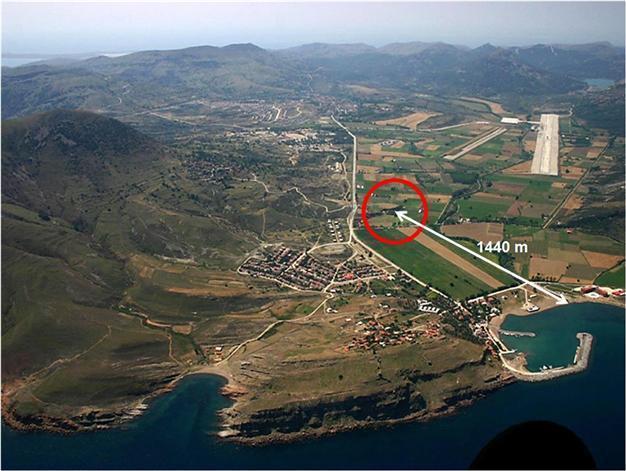Traces of tsunami discovered in Gökçeada
ÇANAKKALE – Doğan News Agency

Archaeological work on the island of Gökçeada has revealed that an earthquake occurred in the region 4,700 years ago, followed by a tsunami.
Çanakkale Onsekiz Mart University Geology Department Professor Doğan Perinçek said they had found the traces of the earthquake and tsunami during works between 2006 and 2008.
Gökçek made a statement June 2 after an earthquake measuring 6.5 that occurred on May 24 in the region.
He said both he and Professor Halime Hüryılmaz had found traces of an earthquake that occurred in 2680 B.C. following work in the area of Yenibademli.
“The earthquake broke the walls of the settlements. There is also data that it created a tsunami. We have found the sediments of a tsunami in the region as well as a layer of earth of sand including fossils of sea creatures. Ceramics that were found right below the tsunami sediments date back to 2680 B.C. This is why the earthquake and tsunami occurred before this date, which means it was 4,700 years ago,” he said.

“Tsunami waves hit the lower coasts. Yenibademli partly or totally remained under water because of the tsunami. The district was abandoned by locals but they returned sometime later,” he added.
Perinçek said Gökçeada was located right next to the Northern Anatolia fault line.
Information about some earthquakes can be seen in some historical documents, but the temblor to hit the island almost 5,000 years ago was not recorded, he said.
“The only record is the geological traces that we can observe here. Since Gökçeada is located next to the fault line, it is natural that earthquakes occur in the region,” he said.
 Archaeological work on the island of Gökçeada has revealed that an earthquake occurred in the region 4,700 years ago, followed by a tsunami.
Archaeological work on the island of Gökçeada has revealed that an earthquake occurred in the region 4,700 years ago, followed by a tsunami.  “Tsunami waves hit the lower coasts. Yenibademli partly or totally remained under water because of the tsunami. The district was abandoned by locals but they returned sometime later,” he added.
“Tsunami waves hit the lower coasts. Yenibademli partly or totally remained under water because of the tsunami. The district was abandoned by locals but they returned sometime later,” he added.